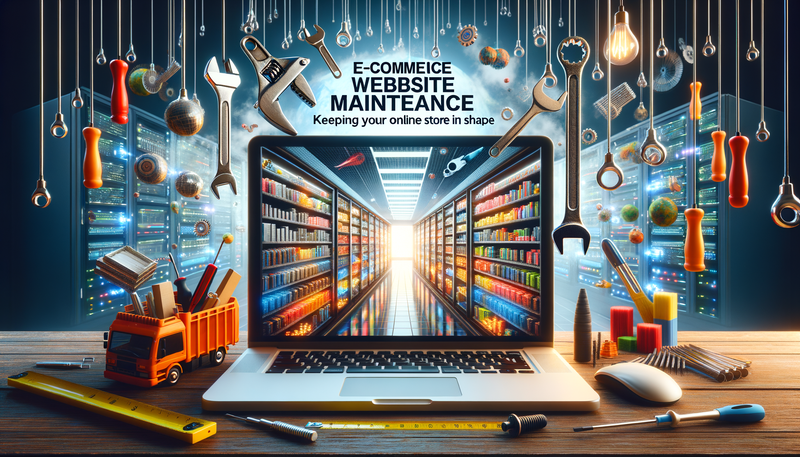E-commerce Website Maintenance: Keeping Your Online Store in Shape
E-commerce websites require constant maintenance to ensure smooth operations and optimal performance. This article delves into the specific maintenance tasks crucial for keeping your online store in top shape. From managing inventory and updating payment gateways to optimizing the customer experience, we'll explore the key areas that demand attention. Regular maintenance not only prevents technical issues but also enhances user satisfaction, boosts sales, and keeps your e-commerce business competitive. By implementing these maintenance practices, you'll create a robust online presence that can adapt to changing market trends and customer expectations. Let's dive into the essential tasks that will help you maintain a thriving e-commerce website.Table of Contents:

Inventory Management: The Backbone of E-commerce
Effective inventory management is crucial for any e-commerce website. Regularly update your product listings, ensuring accurate stock levels, pricing, and descriptions. Implement an automated inventory tracking system to avoid overselling or stockouts.Conduct periodic audits to reconcile physical inventory with digital records. Remove or update discontinued products promptly to maintain a clean and current catalog. Consider using inventory forecasting tools to anticipate demand and optimize stock levels.
By maintaining an up-to-date and well-managed inventory, you'll improve customer satisfaction and reduce the risk of order fulfillment issues.
Do you need a website? Want to build a website but don't know where to start? Our website builder is the perfect solution. Easy to use, and with the ability to customize to fit your business needs, you can have a professional website in no time.
Payment Gateway Updates: Ensuring Secure Transactions
Payment gateways are the lifeline of e-commerce transactions. Regularly update your payment gateway integrations to ensure compliance with the latest security standards and protocols. Stay informed about new features or requirements from your payment providers.Conduct periodic security audits to identify and address potential vulnerabilities. Test the checkout process regularly to ensure smooth transactions across different payment methods and devices.
Consider implementing additional security measures like two-factor authentication or fraud detection systems. By maintaining a secure and up-to-date payment system, you'll build trust with your customers and protect your business from potential financial risks.
Customer Experience Optimization: Enhancing User Satisfaction
Continuously optimizing the customer experience is essential for e-commerce success. Regularly analyze user behavior data and gather feedback to identify areas for improvement. Optimize your website's loading speed by compressing images, minifying code, and leveraging browser caching.Ensure your site is mobile-responsive and provides a seamless experience across all devices. Implement and maintain an intuitive navigation structure and search functionality. Regularly update your product recommendations algorithm to provide personalized suggestions.
Consider implementing chatbots or live chat support to address customer queries promptly. By focusing on customer experience optimization, you'll increase user satisfaction, boost conversions, and encourage repeat business.
Building a website with SITE123 is easy
Content Updates: Keeping Your Store Fresh and Relevant
Regular content updates are crucial for maintaining an engaging e-commerce website. Refresh your product descriptions, images, and videos to keep them current and appealing. Create and maintain a content calendar for blog posts, promotional banners, and seasonal offers.Optimize your product pages for search engines by updating meta titles, descriptions, and alt tags. Implement a review system and encourage customers to leave feedback on their purchases.
Consider creating how-to guides, product comparisons, or user-generated content to add value for your customers. By consistently updating your content, you'll improve search engine rankings, engage customers, and showcase your expertise in your niche.
Technical Maintenance: Ensuring Smooth Operations
Regular technical maintenance is essential for the smooth operation of your e-commerce website. Keep your content management system, plugins, and themes up to date to ensure security and compatibility. Regularly backup your website data and test restore procedures.Monitor your website's performance using tools like Google Analytics and address any issues promptly. Conduct regular security scans to detect and remove malware or suspicious activity.
Optimize your database periodically to improve site speed and performance. Implement and maintain an SSL certificate to ensure secure connections. By prioritizing technical maintenance, you'll minimize downtime, protect against security threats, and provide a reliable shopping experience for your customers.





